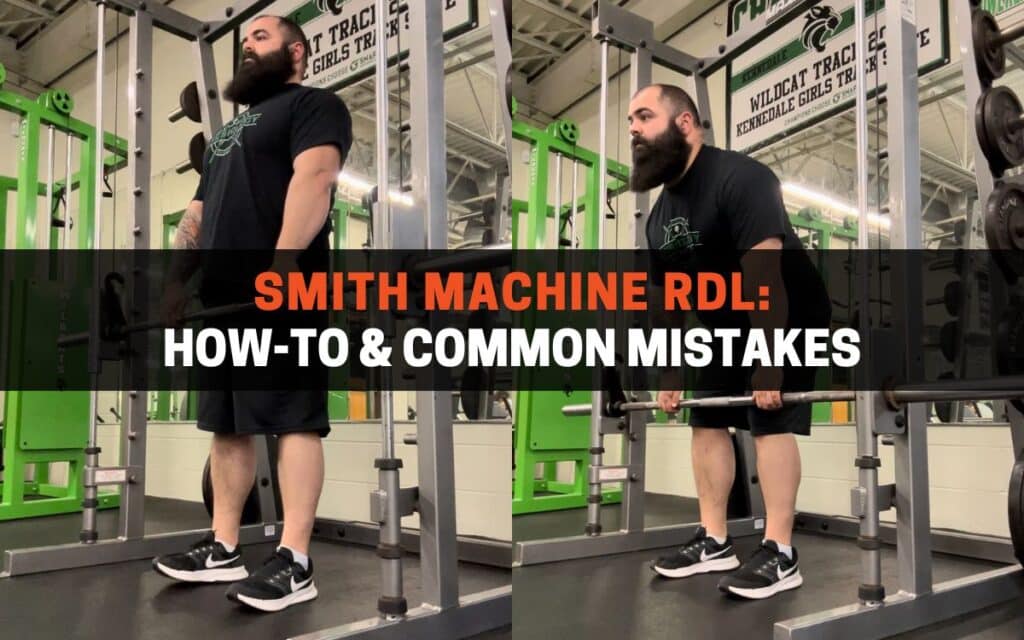
The Smith machine RDL can get a bad rap among powerlifters but has some overlooked benefits.
The fixed bar bath provides stability and reduces the chance of injury. It allows you to focus on isolating and strengthening your posterior chain, such as the glutes and hamstrings.
As a strength coach, I program the RDL to improve lower body strength and increase hinge ability, and the Smith machine is good for beginners.
Read on as I show you how to RDL on a Smith machine, the muscles used, and common mistakes that can occur to avoid potential injury.
The Smith Machine RDL is one of the best exercises for a back workout using a Smith machine. Check out the full post for details.
How To Do The Smith Machine RDL
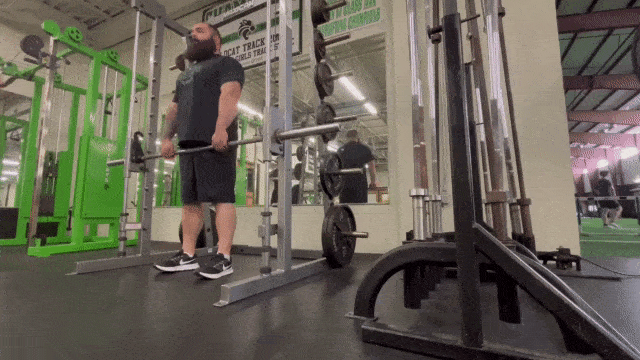
The proper form to do an RDL on the Smith machine is:
- Position the Smith machine barbell at hip height in front of your legs.
- Grasp the barbell with feet shoulder-width apart and using an overhand grip.
- Stand with feet directly under the barbell, knees slightly bent.
- Unhook the safeties of the bar to initiate movement.
- Hinge at the hips, pushing buttocks back while maintaining a straight back.
- Lower the barbell along the front of the thighs, feeling a stretch in the hamstrings.
- Lower until a comfortable stretch is felt just below the knees, or preferably just before the weight touches the floor.
- Drive hips forward, squeezing glutes at the top.
- Stand tall with hips fully extended, barbell at hip height.
Pro Tip: Make sure the middle of your foot is just below the bar so that the movement stays perfectly aligned from start to finish.
You can also try the Smith machine deadlift. Check out the full post and how it can add more depth to your program!
Common Mistakes Doing The Smith Machine RDL
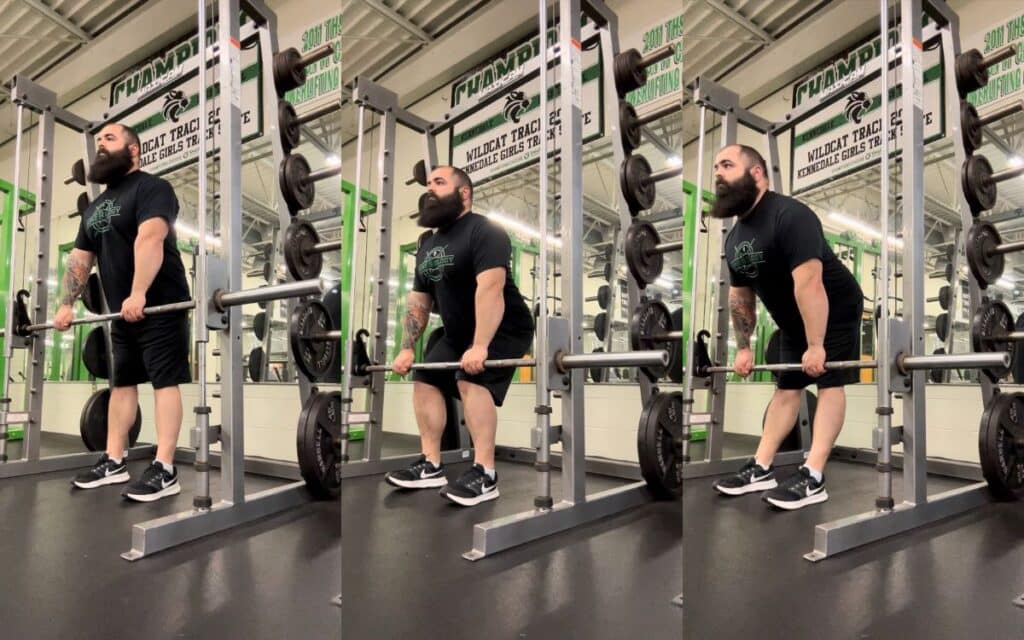
Three common mistakes are drawbacks when doing the Smith machine Romanian deadlift:
- You stand too far from the Smith machine initially: This is the most common mistake with the Smith machine RDL. Individuals who stand too far from the barbell during a Smith machine RDL will displace resistance unevenly and more than likely recruit their lower back muscles instead of the glutes and hamstrings.
- You perform the movement with locked-out knees: Performing the Smith machine RDL with locked-out knees could overload the hamstrings and limit glute engagement.
- You let your hips drop and ascend during each rep, like a deadlift: The RDL, also known as the Romanian deadlift, requires the hips to move horizontally, not vertically. When you drop your hips during an RDL, you are technically doing a conventional deadlift, which employs leg drive and creates muscle activation different from an RDL.
Performing the RDL with a correct hinge motion ensures you are optimally recruiting the glutes and hamstrings. Many people who perform the RDL incorrectly will start to use their lower back, which could cause an injury.
Before adding to your workout, check out the Smith machine bar weight to know how much to lift in your next session!
How To Add The Smith Machine RDL To Your Workout
When adding the RDL on a Smith machine to your workout, you want to make sure and follow these guidelines for the desired number of reps and sets:
- For building size – You want to do 3-5 sets of 10-12 reps
- For building strength – you want to do 2-3 sets of 5-8 reps
Below are some sample programs that implement these principles of building size or strength using the Smith machine RDL:
Sample Workout for Building Size
- Front Squats: 3 sets of 10 reps
- ***Smith Machine RDL: 3 sets of 12 reps
- DB Walking Lunges: 5 sets of 20 total reps
- Single Leg Machine Curls: 2 sets of 20 reps for each leg
When building size, it's important to perform high-rep sets that catalyze a size-building routine. Higher reps and volume will exhaust the muscle to evoke a better anabolic response in the body for building muscle mass.
Sample Workout for Building Strength
- Front Squats: 2 sets of 5 reps
- ***Smith Machine RDL: 3 sets of 6 reps
- DB Walking Lunges: 5 sets of 12 total reps
- Single Leg Machine Curls: 2 sets of 12 reps for each leg
When building strength, performing lower reps and heavier weights is important to improve and optimize your strength gains.
You can also try other back exercises with a Smith machine, such as the row, inverted row, single arm row, shrug, and sumo deadlift. I also wrote a post with alternatives to the RDL to consider.
Muscles Worked During The Smith Machine RDL
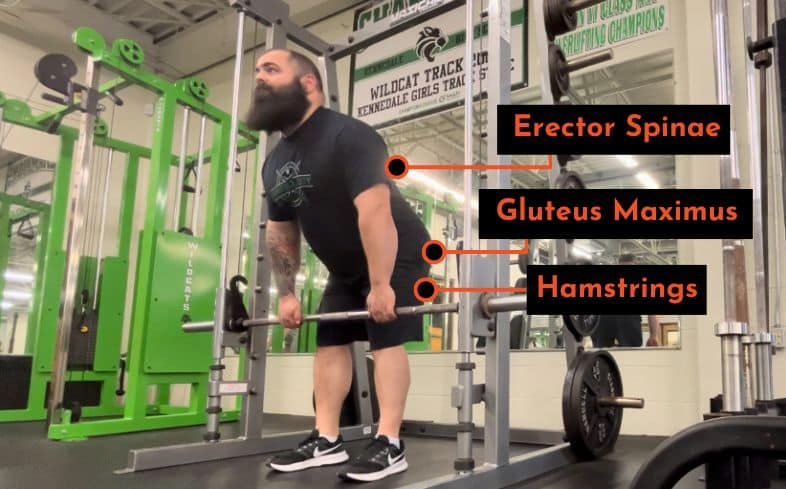
The muscles used during a Romanian deadlift on a Smith machine are:
- Gluteus Maximus: They are the primary movers or the Smith machine RDL that help extend the hip joint during this exercise.
- Hamstrings: They are another primary mover of the Smith machine RDL that works with the gluteus maximus to extend the hip.
- Erector Spinae: They are a secondary muscle that stabilizes the spine by preventing excessive rounding of the vertebrae and maintaining a neutral spine throughout the movement.
Check out how the RDL differs from the deadlift in my full post. I also covered the muscles worked during a deadlift for comparison.
Alternatives To The Smith Machine RDL
If you're looking for an alternative to the Smith machine RDL, consider equipment availability, training goals, and skill level of movement.
Dumbbell RDL
The dumbbell RDL is a great alternative to the Smith machine RDL as it provides an alternative source of resistance through free weights. It also allows the lifter to adjust the weight displacement of the movement so it can be closer to its center of gravity.
How to Perform
- Stand with feet hip-width apart, holding dumbbells with an overhand grip.
- Hinge at the hips, lowering dumbbells along the front of the legs while keeping the back straight.
- Lower dumbbells until feeling a stretch in the hamstrings or torso parallel to the ground.
- Engage hamstrings and glutes to return to the starting position, squeezing glutes at the top.
Single Leg RDL
The single-leg RDL is a great alternative for those more advanced in their journey and want a challenging unilateral stimulus. It also challenges the stability of your movement much more than a normal RDL.
How to Perform
- Stand on one leg with a slight bend in the knee, holding a dumbbell in one hand or two dumbbells.
- Hinge at the hips while extending the non-weight-bearing leg behind for balance, lowering the dumbbell(s) toward the ground while keeping the back straight.
- Lower the dumbbell(s) until feeling a stretch in the hamstring or torso is parallel to the ground, maintaining a straight line from head to heel on the extended leg.
- Engage the hamstring and glute of the weight-bearing leg to return to the starting position, keeping the core engaged for stability.
Frequently Asked Questions
Which way do you face on an angled Smith machine for RDL?
Face towards the machine on an angled Smith machine for Romanian Deadlifts (RDL) to ensure proper alignment and movement execution.
What are the benefits of Smith Machine RDLs?
The benefits of RDLs with the Smith Machine are:
- Ensures a stable and controlled movement path.
- Ideal for beginners to learn proper form.
- Allows for focused muscle engagement, especially in the hamstrings and glutes.
What are the drawbacks of Smith Machine RDLs?
The drawbacks of RDLs with the Smith Machine are:
- Limited natural movement can restrict muscle activation.
- May not engage stabilizing muscles as effectively as free weights.
- Less functional compared to traditional RDLs with a barbell.
References
Mangine GT, Hoffman JR, Gonzalez AM, Townsend JR, Wells AJ, Jajtner AR, et al. The effect of training volume and intensity on improvements in muscular strength and size in resistance-trained men. Physiological Reports [Internet]. 2015 Aug;3(8):e12472. Available from: https://www.ncbi.nlm.nih.gov/pmc/articles/PMC4562558/pdf/phy20003-e12472.pdf
About The Author
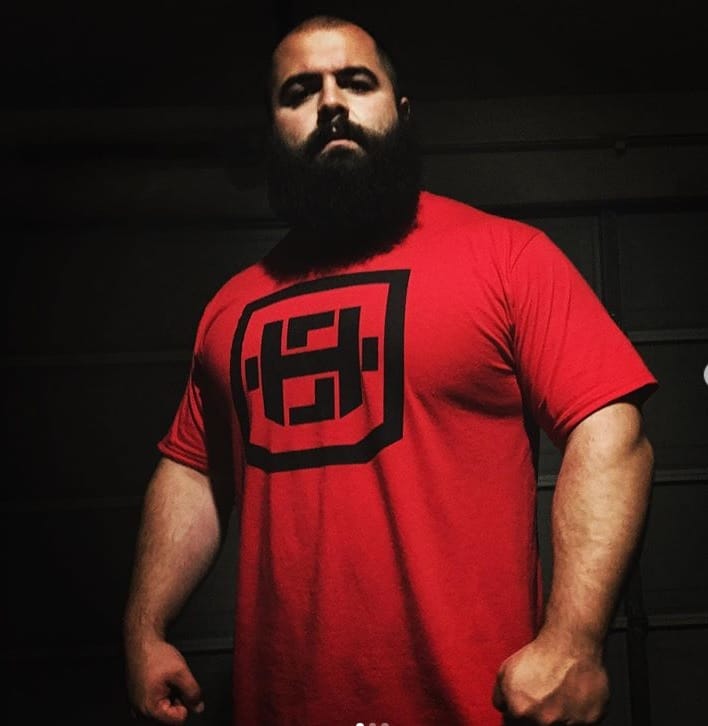
Joseph Lucero is a Strength Coach and Author and owns Harvesting Strength LLC. He's CSCS Certified, and when he's not helping clients get stronger, he writes about strength and conditioning to help readers. You can connect with him on LinkedIn and Instagram. You can book a free 20-minute consultation with him to see if a custom program would help you achieve your goals.
